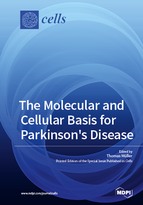The Molecular and Cellular Basis for Parkinson's Disease
A special issue of Cells (ISSN 2073-4409). This special issue belongs to the section "Cells of the Nervous System".
Deadline for manuscript submissions: closed (31 March 2019) | Viewed by 95087
Special Issue Editor
Interests: neurology; psychiatry; pain; Parkinson's disease; multiple sclerosis
Special Issues, Collections and Topics in MDPI journals
Special Issue Information
Dear Colleagues,
The focus on dopamine-sensitive motor symptoms, in association with improvement of motor complications in the heterogeneous disease entity Parkinson's disease, leads to a certain standstill in research.
This Special Issue aims to provide new concepts and new ideas on the pathogenesis, genetics, and clinical maintenance of Parkinson's disease and related disorders. Not only new experimental findings, but also clinical outcomes, case series, and research on alternative, non-pharmacological therapies, will be considered.
The objective is to bridge the currently-increasing gap between experimental and clinical research on Parkinson's disease and related disorders.
Prof. Thomas Müller
Guest Editor
Manuscript Submission Information
Manuscripts should be submitted online at www.mdpi.com by registering and logging in to this website. Once you are registered, click here to go to the submission form. Manuscripts can be submitted until the deadline. All submissions that pass pre-check are peer-reviewed. Accepted papers will be published continuously in the journal (as soon as accepted) and will be listed together on the special issue website. Research articles, review articles as well as short communications are invited. For planned papers, a title and short abstract (about 100 words) can be sent to the Editorial Office for announcement on this website.
Submitted manuscripts should not have been published previously, nor be under consideration for publication elsewhere (except conference proceedings papers). All manuscripts are thoroughly refereed through a single-blind peer-review process. A guide for authors and other relevant information for submission of manuscripts is available on the Instructions for Authors page. Cells is an international peer-reviewed open access semimonthly journal published by MDPI.
Please visit the Instructions for Authors page before submitting a manuscript. The Article Processing Charge (APC) for publication in this open access journal is 2700 CHF (Swiss Francs). Submitted papers should be well formatted and use good English. Authors may use MDPI's English editing service prior to publication or during author revisions.
Keywords
- Bridge between experimental and clinical research in PD
- Disease modification in PD
- Mechanisms of chronic neurodegeneration
- Pros and cons of animal models in PD
- Microbiome research in PD
- Alternative therapies in PD
- Non-pharmacological therapies in PD







